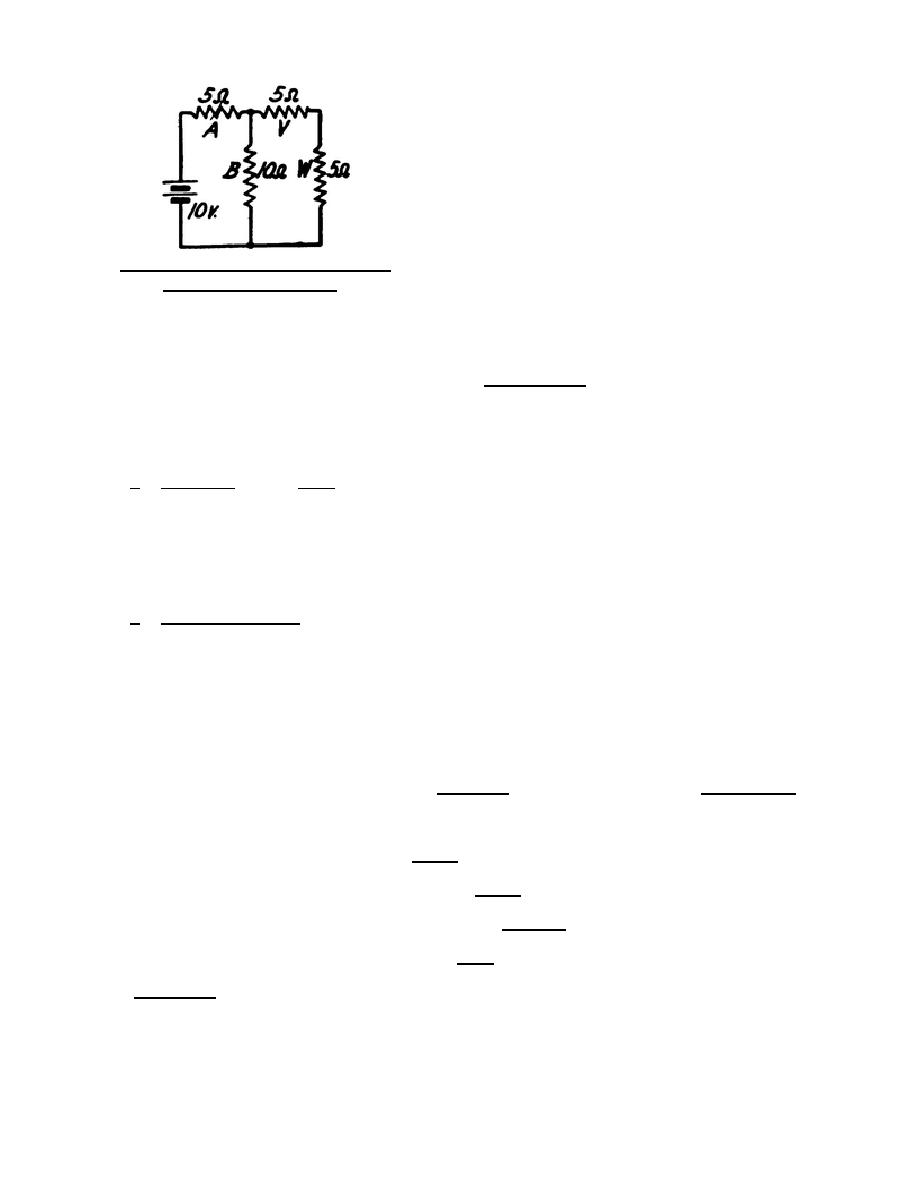
(3) The parallel resistance of
5
ohms
is
added
to
resistor A in series with
the parallel combination
to yield 10 ohms total.
(4) Using Ohm's law, you can
now determine the voltage
drop
across
any
one
resistor in question.
Figure 8. Sample series-
7.
ELECTRICAL POWER
Electrical power is the time
rate at which work is done by an
electrical
device.
Of
greatest
concern in electrical circuits is the
power loss which occurs when heat
is generated by current flowing through a resistance.
The heat is usually
dissipated into the air and lost, but can be utilized as in the case of light bulbs
to produce light, soldering irons to produce heat, or filaments of electron tubes
to produce electron clouds.
a. The Watt. The watt is the unit of electrical power and is equivalent to 1
ampere of current at a pressure (EMF) of 1 volt. In mathematical terms, power is
equal to current times voltage.
By the use of this formula, the power in an
electrical device can be determined if the current and voltage are known.
Other
formulas can be used to determine power if current and resistance are known.
By
simple algebraic conversions of these formulas, the third (unknown) quantity can be
determined if two quantities are known.
b. Sample Problems.
In using the formulas for finding the total power and
the power loss of a circuit, certain items should be noted.
To find the total
power in a circuit, we use the formula P = EI.
Thus, to find the power of the
entire circuit, the total circuit current and total circuit voltage must be known.
On the other hand, a combination of the power formula with Ohm's law will give the
power in a particular part of the circuit or the entire circuit. This combination,
therefore, gives us the formulas P = I2R and P = E2/R for computing the power in a
circuit. If it is desired to compute the power loss in only one part of a circuit,
the current and the voltage drop in that part of the circuit must first be known.
It is important to notice that a small increase in current (I) can give a large
increase in power (P).
For example, doubling the current yields four times the
power.
P = power in the circuit in watts.
E = EMF supplied to the circuit in volts.
I = current flowing in the circuit in amperes.
R = resistance of the circuit in ohms.
Example 1:
What is the power in a 10-ohm circuit that is drawing 2 amperes
of current?
308
12


 Previous Page
Previous Page
